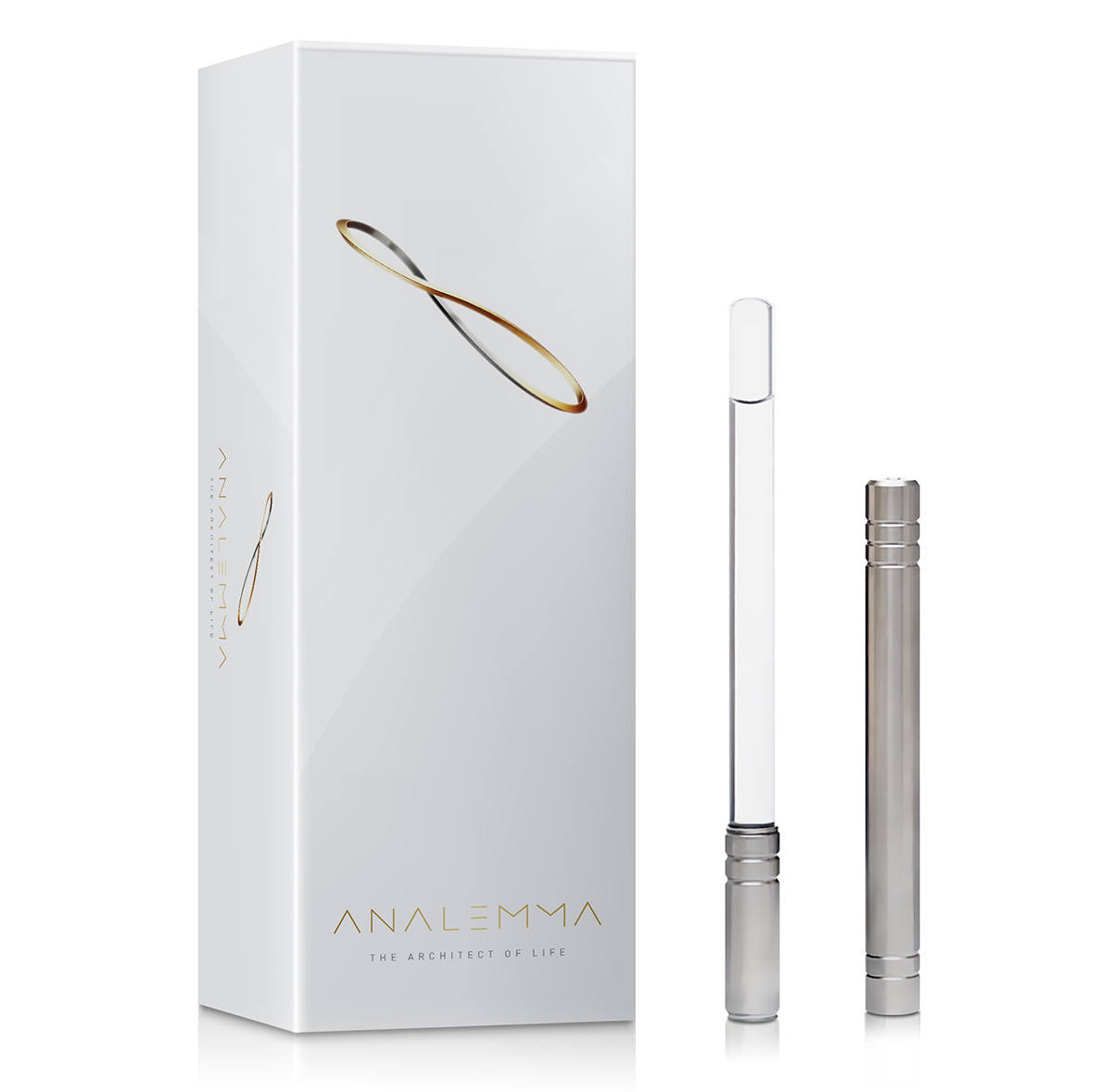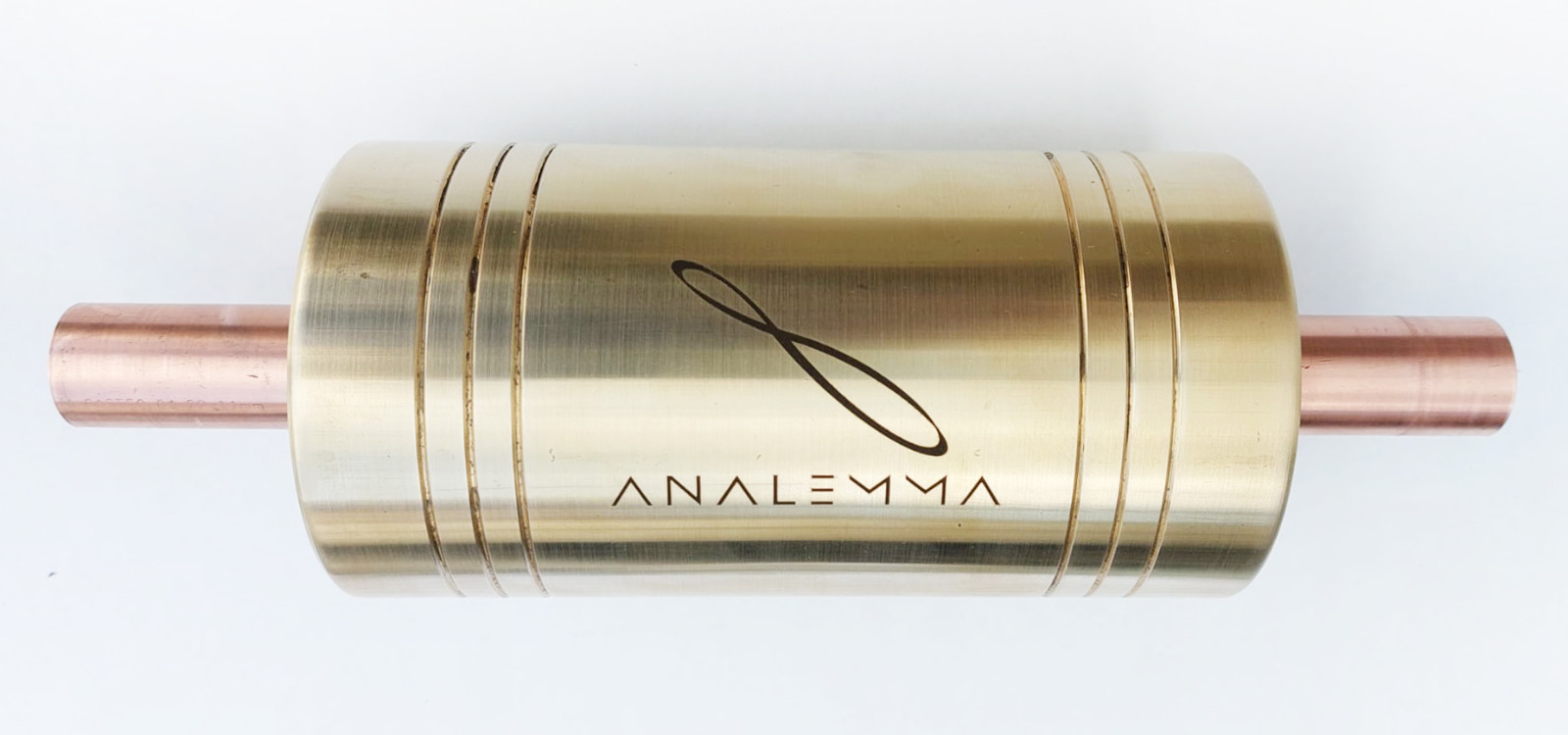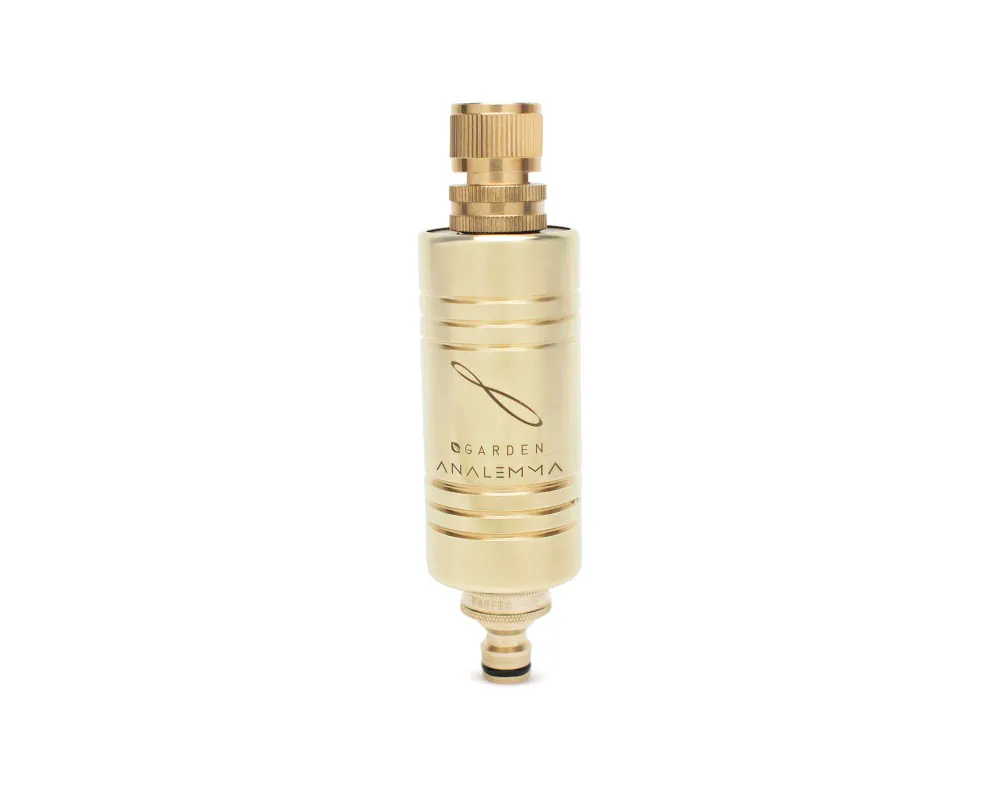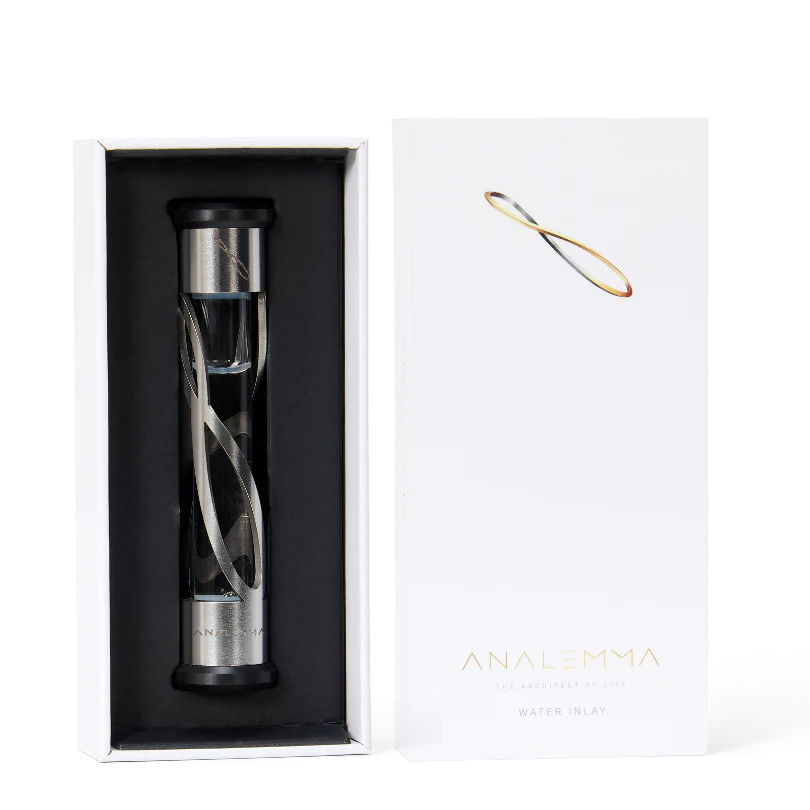Our Research
Brainwaves
RESEARCH
Clinical study shows:
Drinking Aǹalemma water causes visible changes in brain activity!
In 2019, we collaborated with a clinical laboratory specializing in neurotherapy to conduct a series of smaller experiments studying the effect of coherent water on the human brain.
Why did we choose the brain?
The first obvious link was water. The brain is our “thirstiest” organ, made up of about 75% water, more than any other organ in the body. It made sense that coherent water would first reach this water-rich mass of tissue, and that this would be the place where we could directly measure its impact. The second link was the brain’s functionality. The brain is composed of neurons, cells that produce electrical currents to send messages to each other. When different parts of the brain have clear communication, we say that the brain is coherent. Conversely, when the communication is blocked or disordered, there’s a loss of coherence. The question was self-imposing: will ordered (coherent) water have an effect on the order (coherence) of the brain?
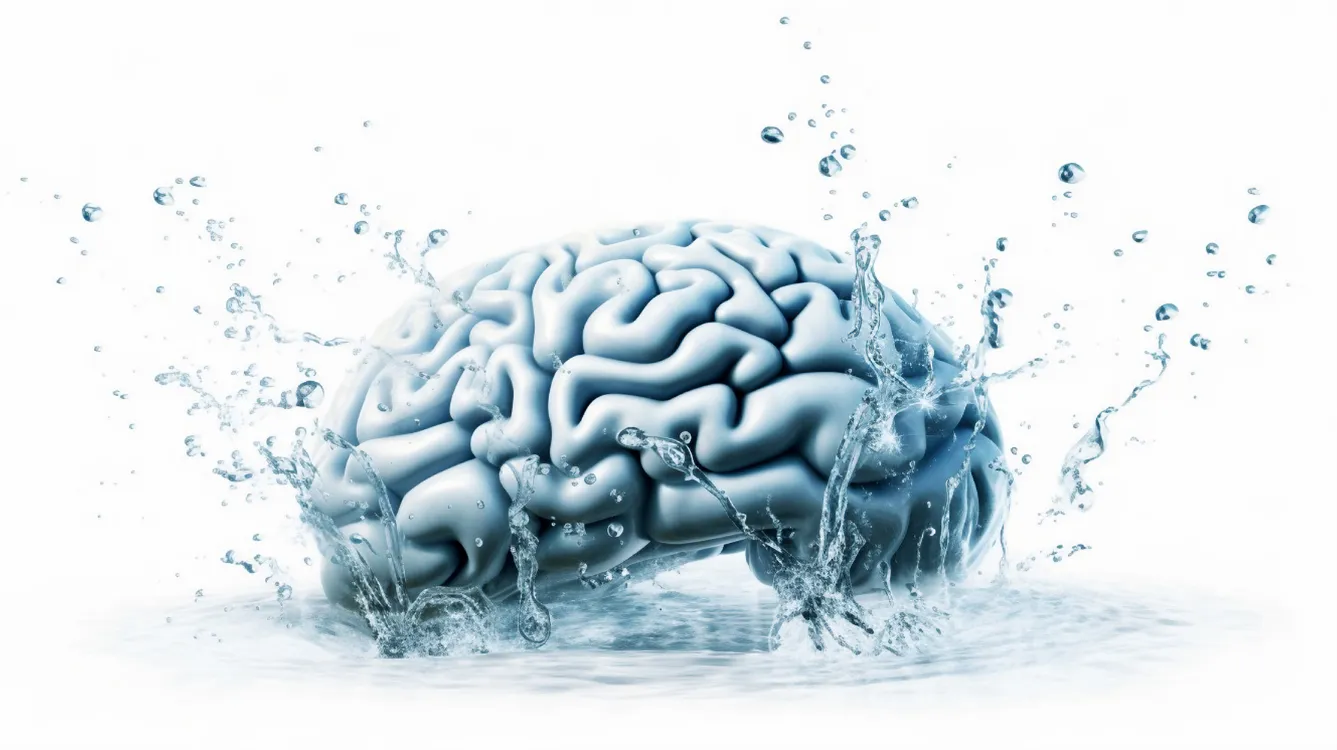
But first - what are brainwaves?
When neurons “talk” to each other, they emit electrical pulses. During certain activities, lots of neurons engage in the same conversation, and they seem to be saying similar things.
In a nutshell, brainwaves are combined pulses of many neurons shooting out electrical currents in a synchronized fashion. And these pulses are so strong we can actually detect them by placing electrodes on the scalp.
There are 4 major types of brainwaves. Going from low to high frequency they are called delta, theta, alpha and beta brainwaves. For example, the slow, stretched-out delta brainwaves are most active when we are in deep sleep, while the fast-cutting beta brainwaves activate when we are trying to solve a difficult mental task. Observing brainwaves by qEEG allows neuroscientists to study brain activity in response to what is currently happening in the mind or body. It also allows them to measure the effect of different substances on brain activity, which was exactly the goal of our 2019 study.

What did we measure?
In the experiments, the qEEG electrodes were positioned on 19 spots on the head to measure brainwave activity in 19 different brain locations. Two main parameters were assessed:
1) POWER
Brainwave power simply tells us something about how active different frequencies are at different locations during different tasks. For instance, in healthy individuals, delta brainwaves are highly active during sleep, across the entire brain.
2) COHERENCE
Coherence is a measure of the efficiency of communication between different brain locations at a specific frequency. When the brain is in optimal coherence, this means that distant brain regions are communicating in an adequate way at that specific frequency, regardless of the overall power.

RESEARCH
Clinical study 1:
Increased delta coherence
DOUBLE-BLIND PLACEBO-CONTROLLED TWIN STUDY
Two identical twins, aged 19, were given a glass of water. Neither the twins nor the physician knew what type of water they received. After the baseline qEEG measurement, they drank the water and within 10 minutes, the second qEEG measurement was performed.
The images below show the twins’ delta coherence maps. The circles represent 19 distinct brain locations, and the colors indicate brainwave coherence in comparison to reference values of the healthy population. Blue color indicates that the measured levels are below average, green points to normal, average values, and red indicates above average levels.
The difference in delta coherence levels of the two twins is quite remarkable. Both twins started out with below average coherence levels across most brain location (blue color). However, while Placebo had no apparent effect on brainwave coherence, Aǹalemma water caused an immediate increase in delta coherence, showing predominantly average levels across most brain locations (green color). This effect was observed only 10 minutes after drinking the water.
Brain maps of the twin who consumed placebo
Brain maps of the twin who consumed Aǹalemma Water
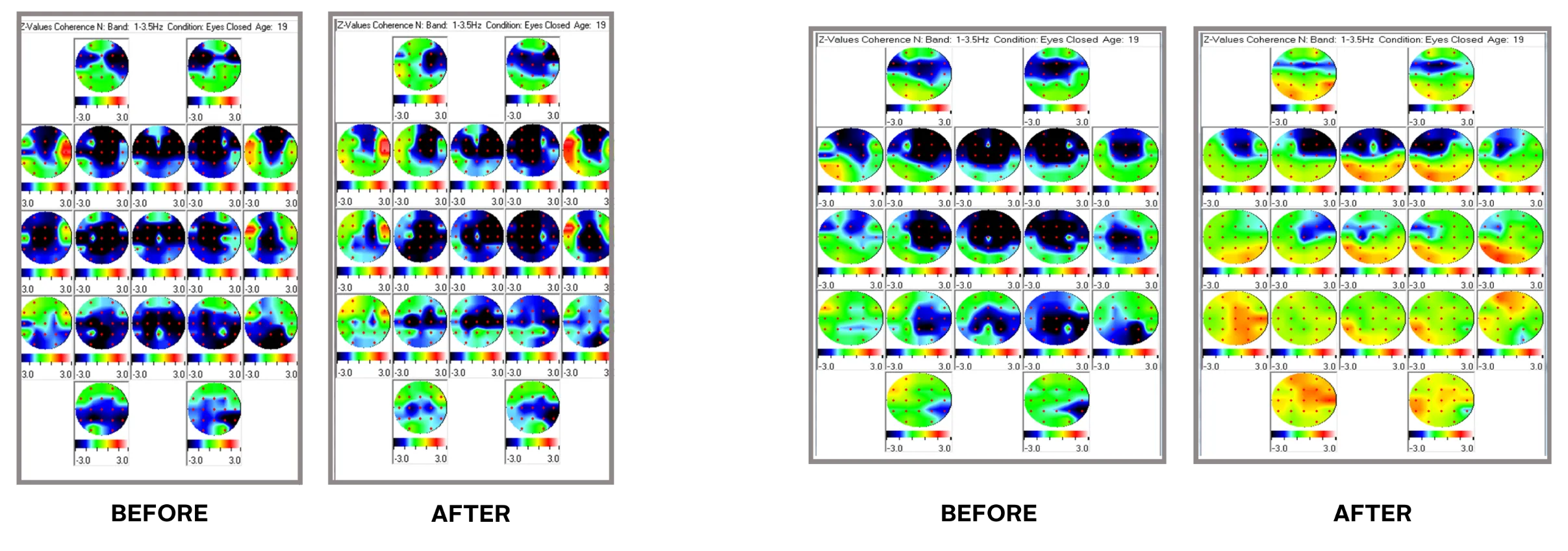

RESEARCH
Clinical study 2:
Decreased delta power
A STUDY OF IMMEDIATE AND LONG-TERM EFFECTS
In the second case study, we analyzed delta brainwaves of a 68 year-old woman diagnosed with a neurological condition marked by high delta activity. In healthy humans, delta brainwaves are most active in states of deep sleep. In this neurological condition, delta brainwave activity is abnormally increased even during waking hours. Because the participant’s delta activity was significantly shifted, we could use it as a biomarker to assess the effect of Aǹalemma water on her brain activity
First, we analyzed the immediate effect of Aǹalemma water, conducted in a similar way as the twin experiment.
Additonally, we analyzed long-term effects of Aǹalemma water. The participant continued consuming Aǹalemma water for 51 consecutive days and her delta activity was measured on Days 1, 2, 9, 37 and 51.
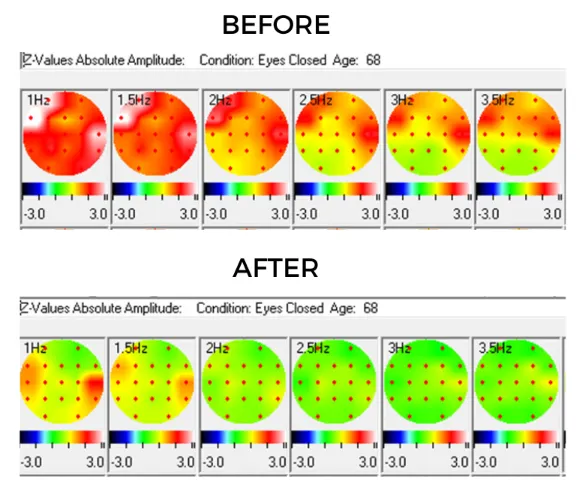
RESULT 1
Aǹalemma water immediately affects delta power
The image on the left shows delta power maps of the 68 year-old participant before and after consuming Aǹalemma water.
Only 10 minutes after drinking a glass of Aǹalemma water, her delta brainwave power (1-3.5 Hz range) went from predominantly above average (red), into predominantly average (green).
RESULT 2
Aǹalemma water affects delta power long-term
The image on the right shows delta power maps of the 68 year-old participant during 51 days of continuous consumption of Aǹalemma water.
The brain maps indicate that during this period, the participant’s delta brainwave activity gradually decreased, going from above average levels (red) measured on Day 1 toward average activity (yellow-to-green) by Day 51. It is important to note that these measurements were obtained in normal conditions (i.e. the participant didn’t consume Aǹalemma water before the qEEG), indicating that the effect persisted over time.
As mentioned, delta brainwaves shouldn’t be active during waking hours. Certain neurological conditions, such as the one this woman was diagnosed with, are marked by increased drowsiness during the day and this is correlated with increased delta brainwaves. This is why this result is so incredible, as it points to an important positive effect on overall brain activity. Remarkably, when the study was finalized, the participant herself reported feeling less tired and more energized.
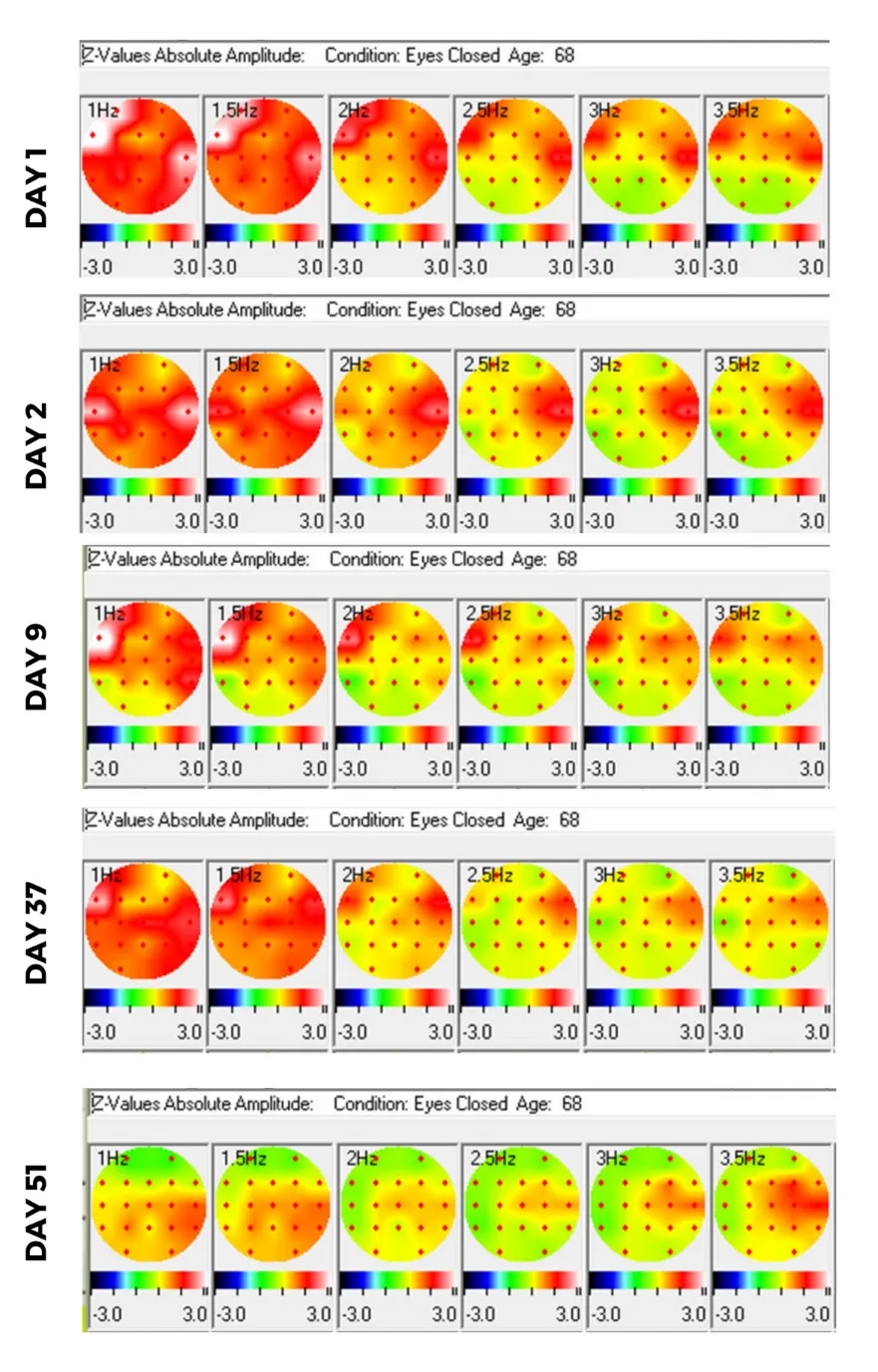
Brainwave patterns are a strong indicator of healthy brain function. While this study included a small number of participants, it demonstrated measurable effects of Aǹalemma water on brain activity.
In these experiments, Aǹalemma water had the strongest effect on low-frequency delta brainwaves. Balanced activity of delta brainwaves is important for having a restful sleep during the night and staying lucid and awake during the day. Additionally, decreased coherence of delta brainwaves has been implicated in several mood and behavior disorders.
Here, we found that drinking Aǹalemma water has a positive effect on delta coherence. While the twin experiment was only a preliminary case study, it indicates an important role of coherent water in maintaining balance and order in the brain. In times of everyday stress negatively affecting our overall health and wellbeing, order and harmony are becoming a matter of utmost importance – and coherent water might just be the step in the right direction.
This study included additional experiments, such as the role of Aǹalemma water on mitigating possible negative effects of cellphone radiation


